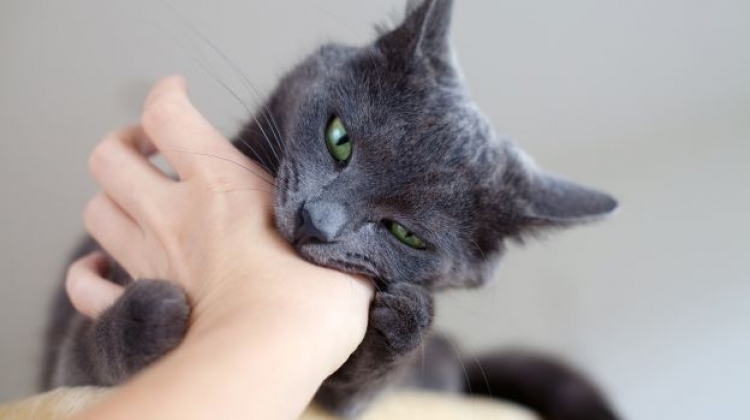Roberta
Sat 17 February 2018
0
Have you ever been bitten by your beloved cat while you were petting it?
It happens much more often than we might think. We may be relaxing on the couch with our cat purring on our lap and enjoying our strokes, when suddenly, without any apparent reason, he turns around and bites our hand with all his strength.
Why does he do that?
Once, a lady gave me her explanation for it: "my cat does it because suddenly he remembers that he hates me to death!"; we had a good laugh! Obviously, the cat does not behave like that to express a feeling of hatred towards us, but he does so to express annoyance.
One of the possible causes for this annoyance is hyperstimulation: the tactile receptors of the cat are particularly sensitive throughout the body; physical contact is perceived in a much more intense way than humans can understand. A cat starts to perceive contact from the moment our hand is near his hair, even if we are not physically touching it, and often many cats prefer this kind of contact "at a distance" to a real direct contact.
We humans, however, find it so gratifying to caress our cat that we often do not realize that we may be doing it excessively. We go on without paying much attention to a series of small signs that the cat is sending us through body language to express that at that time physical contact is not pleasant anymore. As we continue touching the cat, he is left with one last way to stop that excessive contact: bite the hand that causes it.
What is the proper way to caress a cat, then?
- delicately and never against his will.
- for brief sessions interrupting the caresses often, thus leaving the cat the opportunity to make us understand whether he still wants it or not.
- avoiding picking up the cat (not all cats appreciate it as we would like them to!).
- avoiding caressing sensitive areas of the body (often the belly, paws, tail; every cat may have specific areas where it is particularly sensitive and does not like to be touched).
- waiting for our cat to look for contact with us.
Another thing we need to make sure of, is that Cat is in good physical health. Sometimes a bite given as a result of physical contact can indicate that the cat is feeling pain somewhere, so it is advisable to pay a veterinarian a visit.
Another possible reason for biting is the desire to play: if the cat has not done enough physical or mental activity during the day, he may still be very energetic and would need to release it through some playful activity. Our stimulating hand can then become the ideal object with which to use this energy. Every cat should receive the right amount of stimulation every day. They should have the opportunity to play, climb, explore, hunt, satisfy their feline needs regardless of the type of context in which they live.
What to do during the bite?
- never scold or scream.
- do not withdraw your hand and do not try to detach the cat.
- close your hand and leave it still, without trying to get away from the bite. As soon as the cat stops biting and loses interest in your hand (this happens because immobility is not a stimulant to act) you can slowly take your hand off the cat's reach and stop the physical interaction.
These are just some of the possible situations that may arise, but we must never forget that every situation is unique, and that every individual has his own drives and needs, so it is essential to carefully evaluate each individual case to avoid hasty conclusions that may not correspond to reality.
FISAP CAB Roberta Roscini
ICAN Feline Behaviourist (Consultant)


Add new comment